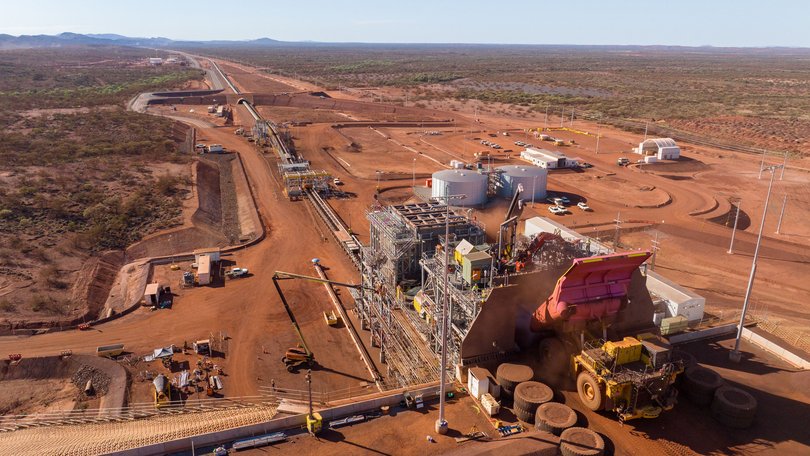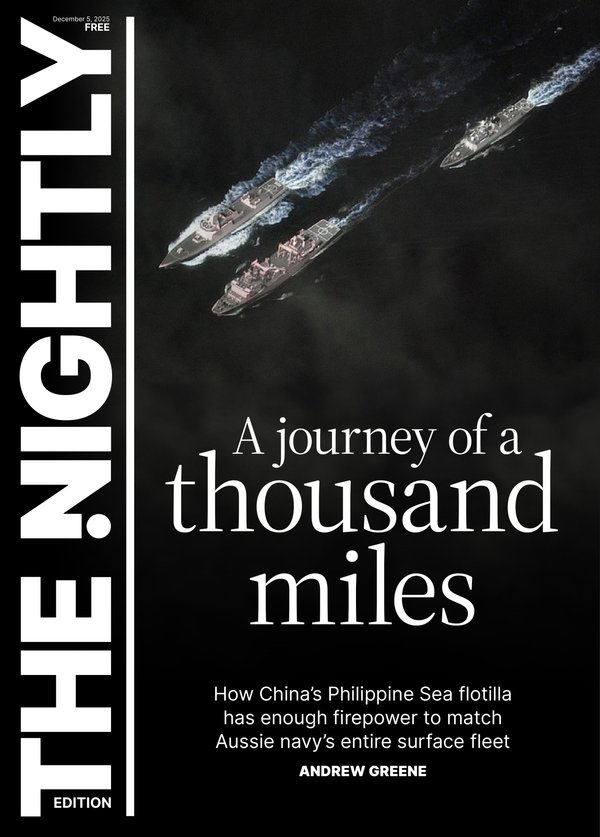Rio Tinto says it’s ‘tightly balanced’ in race to reach lower end of WA iron ore production guidance

Rio Tinto has a bullish view on Chinese steel demand and is tipping a strong finish to the year in the Pilbara as it stays in the race to meet its full-year shipments goal.
Releasing its third-quarter production results on Tuesday, the Anglo-Australian company exported 84.1 million tonnes of iron ore during the three months to the end of September.
This result was flat on the same period a year earlier but up 6 per cent on the previous quarter.
Sign up to The Nightly's newsletters.
Get the first look at the digital newspaper, curated daily stories and breaking headlines delivered to your inbox.
By continuing you agree to our Terms and Privacy Policy.It left full-year guidance unchanged at between 323mt and 338mt but said the final result would be at the lower end of the target band. Multiple cyclones had ravaged the first quarter result, slashing shipments by 13mt.
“A strong Q4 performance is required as the system remains tightly balanced and has limited ability to mitigate further losses,” Rio stated.
Investors were expecting worse — Rio’s shares jumped 3.6 per cent in early trade to $129.73.
Iron ore prices peaked at $US108 per tonne during the September quarter, the highest point since February, which the mining giant pinned on “resilient” Chinese demand despite weakness in the Asian powerhouse’s economy.
“(The Chinese economy) entered Q3 under pressure from persistent deflation, decelerating manufacturing, moderating exports and a sustained soft property sector,” Rio stated.
“Despite these challenges, the government remains committed to its 5 per cent annual growth target, relying on targeted stimulus in infrastructure and technology rather than broad measures.”
On a global level, Rio said the economy “showed modest improvement” in Q3 that was partly driven by “front-loaded investments ahead of anticipated tariffs”.
The looming threat of an escalating trade war comes as Rio edges closer to first shipments from its new giant Simandou project in Guinea.
“At Simandou, we started loading first ore at the mine for movement down the rail and to the port in October,” Rio chief executive Simon Trott said.
Dubbed “the Pilbara killer”, the joint venture project with Chinese partners is expected to export 60mt a year.
Rio owns a 53 per cent stake in the SimFer consortium, which holds the rights to half the vast Simandou site. A separate consortium led by Winning Consortium Simandou holds the other half to develop Simandou’s blocks 1 and 2.
Construction of the giant project has claimed the lives of more than a dozen workers, including a contractor who was killed at Rio’s SimFer site near the south-eastern city of Nzérékoré in August.
Mr Trott said in Tuesday’s update to the market that “this has been a time for huge reflections on safety across the group”.
“Safety remains our number one priority. We are deeply saddened by the tragic death of Mohamed Camara at the SimFer mine site and are committed to learning across our business to prevent future incidents,” Mr Trott said.
Reuters reported in March that 13 people had been killed between June 2023 and November last year during construction of a port and a 670km railway — being managed by WCS — that leads to the remote mines which contain 1.5 billion tonnes of high-grade ore.
Elsewhere across Rio’s expansive asset portfolio, the miner said total copper production was on track to meet the higher end of full-year guidance of between 780,000t and 850,000t, driven by the strong ramp-up of underground mining at Oyu Tolgoi in Mongolia.
Rio upgraded full-year bauxite guidance from between 57mt and 59mt to a new range of 59mt and 61mt.
This reflected consistently higher utilisation rates, according to Rio, particularly at its Weipa hub in northern Queensland where the Amrun mine has continued to exceed nameplate capacity.
